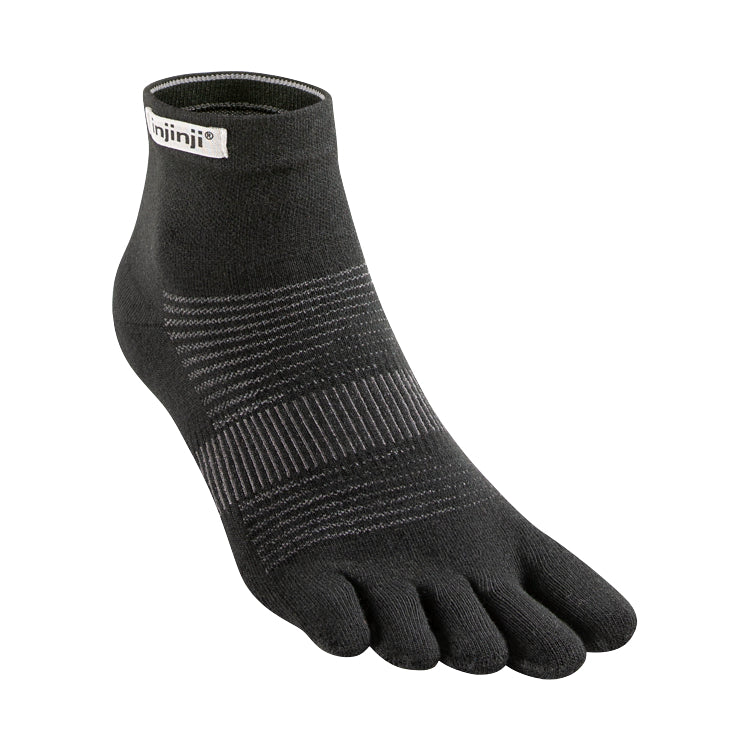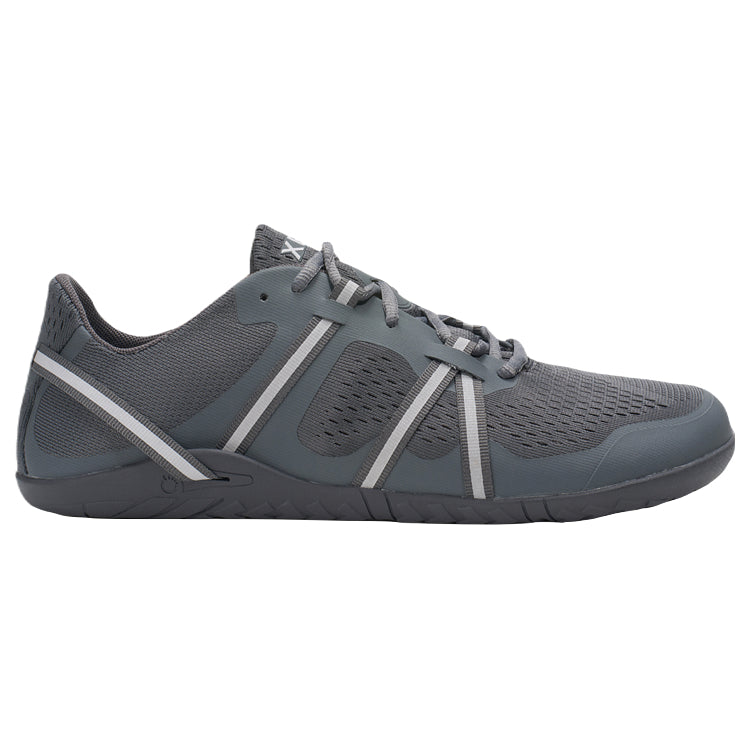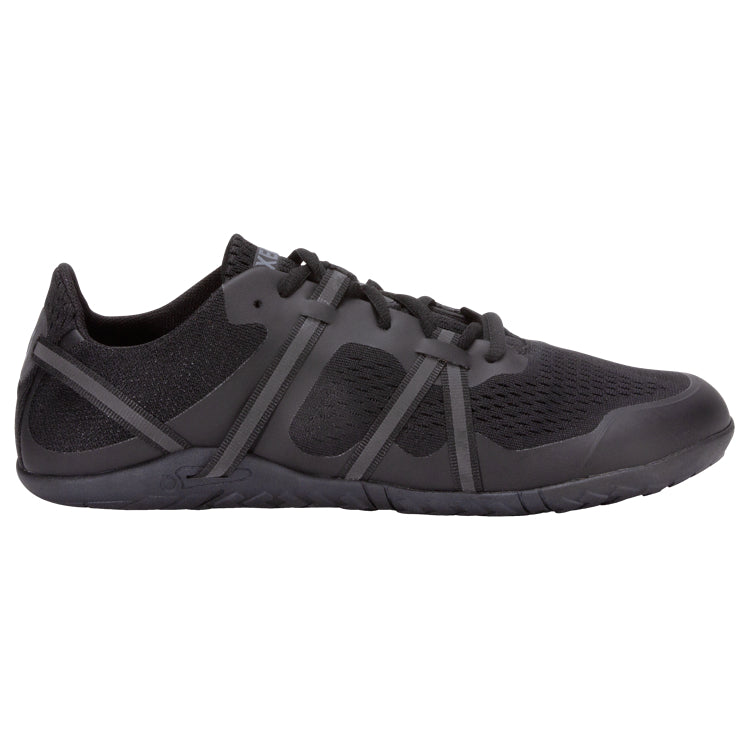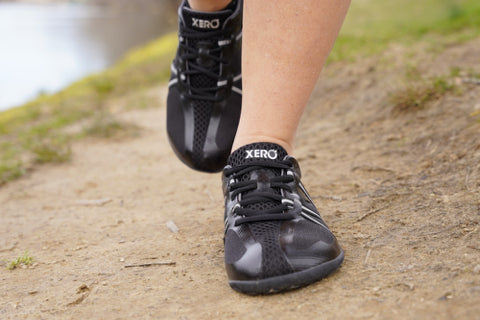
Running is a type of moving, or dynamic, meditation, and I, like many others, run to recalibrate my outlook on life, center my wandering mind, and spend time in the invigorating “flow” state so often experienced by athletes, gamers, musicians, and other performers. There is something so fundamental and primal about running; indeed, our ability (and willingness) to run long distances is something that sets us apart from all other creatures on this planet, and many believe that, not only were we born to run, we absolutely must run in order to realize our healthiest and, in many ways, best selves (best, at least, in the sense that running teaches us perseverance, dedication, and how to overcome challenges and obstacles).
For me, I've historically had an on-again, off-again relationship with running, due in large part, I think, to poor past footwear choices and the subsequent pain and problems caused by conventional running shoes, but also because I was not fully aware of how to run or how to derive maximum enjoyment from the experience. It's only since adopting foot-shaped, minimalist footwear and being more mindful and conscientious about my running (both in terms of running form and the intensity at which I run; which is, primarily long, slow distance, burning fat, not carbs, several times per week, with shorter runs incorporating bouts of high-intensity intervals on other days) that I have come to not only make peace with running, but to truly enjoy the activity and appreciate it as one of life's great pleasures.
I know that a lot of runners enjoy listening to music during their runs, and I certainly understand the appeal, but music has a large, perhaps outsized impact on my thoughts and mood, and I find that it sometimes pulls me away or distracts me from the experience I'm actually looking for, which is some combination of growth + meditation. Personally, I instead enjoy focusing on specific aspects of this movement art when I’m jogging on the trail or running on the road, as I find that I can more easily slip into a healthier meditative state this way. I do try to be present, aware, and appreciative of my surroundings (especially when I’m running on the beautiful trails here in the Western North Carolina mountains, where Natural Footgear is headquartered), but I also enjoy concentrating on three simple things that help enhance my efficiency and enjoyment of running:
Let me take you into my world for a moment and elaborate on each of these meditations that I've found so helpful when running.
1. Controlled Nasal Breathing

I was first introduced to the idea of nasal breathing during physical activity through chiropractor and Ayurvedic practitioner John Douillard’s excellent book, Body, Mind, and Sport. In his book, Dr. Douillard discusses the importance of breathing through your nose during exercise and how this ought to be the natural state of things:
It is my belief that man, like most mammals, is designed to breathe through the nose and eat through the mouth, except in extraordinary circumstances when access to nasal air is insufficient. If nose breathing is performed correctly, the proper balance of diaphragmatic and chest breathing is naturally coordinated, without thought and without effort. We should not have to think about how we breathe; it should come naturally. But we have forgotten how. We have been conditioned away from using the nose as our primary breathing instrument during exercise.
According to Dr. Douillard, inhaling through your nose versus your mouth draws air deeper into your lungs, where it mixes with the relatively greater volume of blood bathing the lower portions of each lung. This means that more oxygen may be absorbed into your blood, which in turn helps decrease your heart rate, reduces the amount of stress on your heart, improves your stamina, and allows you to recover more quickly after your activity. Exhaling through your nose, using the breathing technique Dr. Douillard describes in his book as “Darth Vader breathing,” keeps air in your lungs for a longer period, too, which may help boost oxygen absorption. This breathing technique also helps prevent dehydration.
When I practice nasal breathing during my runs, I get immediate feedback about what kind of effort I’m expending. I run because I enjoy being out in nature, true, but I also run for the health benefits associated with it (I consider running, cycling, hiking, and other forms of exercise as the best possible preventative medicine and health insurance against the diseases of modern living). My goal is to keep my intensity level at a place where nasal breathing can be performed comfortably, for maximum health gains. If I find myself breathing through my mouth, I take this as a sign to step down my intensity, unless I've made the conscious decision to go anaerobic, such as during an interval. So, focusing on nasal breathing is a running meditation that I have found extremely helpful, and it serves as my best guide for and indicator of how to modulate my running intensity.
2. Purposeful Arm Swing

Another running meditation that I have really come to appreciate is purposeful arm swing. It may sound a bit unusual to give so much attention to the arms, given that the legs are doing the bulk of the work when running, but the arms—and what they are doing in space—are vitally important too. I consciously focus on arm swing when I run because I tend to, by default, let my arms dangle a bit, unused to their full potential (and I'm not the only one who does this—I've seen you out there, my dangly-armed compatriots!).
An even and powerful arm swing can enhance your balance and rhythm, control your tempo, and help propel you forward. It also makes for a surprisingly good upper body workout! I try to avoid the cross-body arm swing—and resulting (inefficient) torso twisting—that is so common among runners (a bad habit picked up early in life, I personally believe), focusing instead on driving my hands, unclenched, straight ahead and my elbows straight back, my shoulder blades down and back and my arms swinging at my sides like pendulums.
I find that focusing on arm swing is particularly helpful during intervals. I let my arms set the tempo for my legs to match; for me, purposeful arm swing serves as a kind of metronome to dictate the overall pace I want to achieve. Focusing on arm swing takes my mind off the physiological discomfort that comes with short bursts of intense activity. Doing so also recruits and engages my core muscles, which helps stabilize my torso and, I believe, makes me a more efficient and effective sprinter. Concentrating on arm swing is one of the key meditations for me when I run, and I believe that it helps improve my running form and efficiency.
Note: Some may find that a pulse-like arm swing produces more power, particularly when sprinting, and I do believe this technique has merit, but for me and the type of running that I usually do, I find that a pendulum-like arm swing is a more natural and helpful technique.
3. Conscientious Footfalls

My third major meditation for running involves focusing on each footfall and how I’m propelling myself down the road or trail. My ultimate goal is to perform the most mindful or conscientious footfall possible to help mitigate impact forces on my body and preserve my lower extremity joint health. I find it fun, challenging, and centering to execute the gentlest (or “quietest”) possible foot strike, aiming to land a level foot on the ground with each and every stride. Some might call this a “midfoot” strike, but it basically means that my heel and forefoot (including my toes) are landing at about the same time.
In attempting to achieve the most conscientious possible footfall, I try to keep in mind the advice that Dr. Mark Cucuzzella—physician, professor, elite runner, and author—offers in his fantastic book Run for Your Life:
Each foot should land with the full foot making contact at a position to load the spring and not the brake. Avoid overstriding or landing with a straight knee and foot stretched out in front. A full-foot landing pattern maintains balance, reduces shock, decreases the risk of injury, and is more efficient.
To help achieve this optimal footfall, Dr. Cucuzzella suggests that you imagine yourself stomping grapes with every step you take—the same technique employed in the traditional winemaking process. Keeping this analogy in mind will encourage optimal foot positioning during the landing phase of running gait, which occurs, ideally, directly under your hip. Wearing men's or women's shoes that let your feet feel and react to the ground can be extremely helpful for this purpose. Indeed, flat, wide, and flexible minimalist shoes are the great enablers of this most impact-moderating of footfalls.
SHOP MEN'S SHOES SHOP WOMEN'S SHOES
Though I devote quite a bit of brainpower to achieving the perfect footfall with each stride (and hopefully succeeding at least some of the time), I also try to focus on the hinging that occurs between my toes and the ball of my foot during the toe-off phase of gait, as my body rolls up and over my forefoot and toes, which are still planted. I then focus on pushing through my big toe, feeling the incredible splay in all my toes just before toe-off.

This feeling is especially apparent when I use my Correct Toes toe spacers in combination with my foot-healthy footwear, Injinji toe socks, and Pedag metatarsal pads. I believe it’s important to consciously focus on toe splay with each footfall to enhance running efficiency and reduce the chances of musculoskeletal injury.
SHOP CORRECT TOES SHOP INJINJI TOE SOCKS SHOP PEDAG METATARSAL PADS
A Trifecta of Meditations for Mindful Running

So, there you have it! Controlled nasal breathing, purposeful arm swing, and conscientious footfalls are three simple and helpful meditations you can perform while running to enhance your experience and develop optimal running technique. These are the areas of focus that have brought me great joy in running and have, thankfully, and with the help of foot-healthy minimalist footwear and other beneficial footgear, helped keep me injury-free for many, many years. I tend to cycle through these meditations as I run, spending a minute or two on each one with another minute or two of taking in my surroundings sandwiched in-between. I would love to know what meditations you've found most helpful for running, too, so please don't hesitate to reach out and share, if you feel so inclined.
Here's wishing you all the best in meditative and mindful running, whether it be on the road, through the forest, or at the gym!
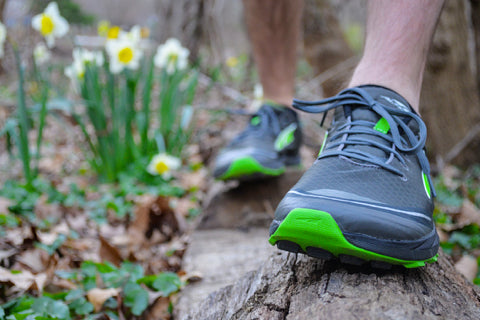 Here’s a common scenario some of you may find yourself in: It’s been a few months since you last pulled on your athletic shoes, and you’ve been wearing conventional shoes at work that meet the office dress code but are kind of constricting. There is a big annual walking or running event coming up in the not-too-distant future that you always participate in, or you’ve recently discovered a new event...
Read more
Here’s a common scenario some of you may find yourself in: It’s been a few months since you last pulled on your athletic shoes, and you’ve been wearing conventional shoes at work that meet the office dress code but are kind of constricting. There is a big annual walking or running event coming up in the not-too-distant future that you always participate in, or you’ve recently discovered a new event...
Read more










